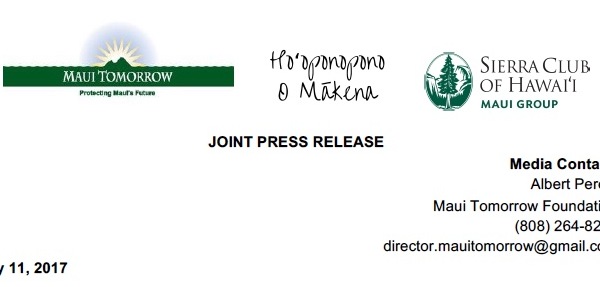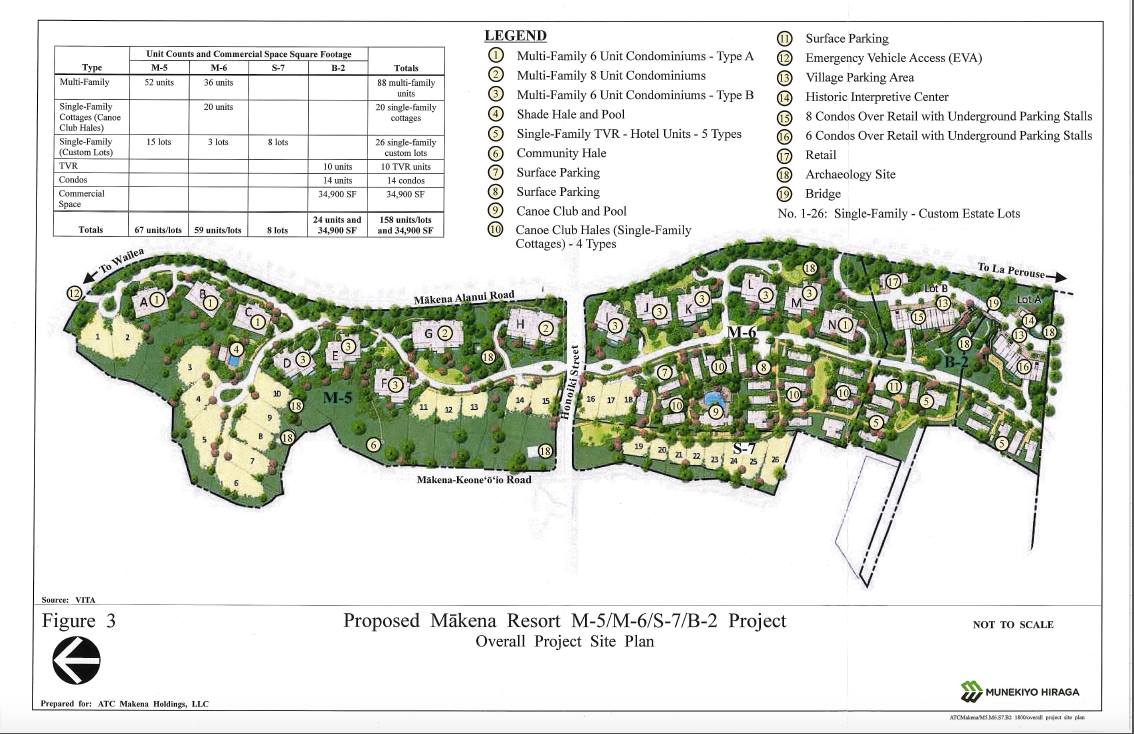y Thomas R. Cannon, Architect, A.I.A., Chair, Maui Island General Plan Advisory Committee | Mar 18, 2011
The recent Hawaiian tsunami illustrates that a dangerous threat to public safety exists here in Maui County. The Kahului Sewage Treatment Plant (KSTP) is located on the beach in a proven tsunami flood zone. When this coastline is eventually hit by a major tsunami (as it was in 1946, 1957, 1960 and 1964) a disaster is almost certain.
When the last major tidal wave struck Maui, there was no centralized sewage facility. Home’s had cesspools. While a centralized sewage treatment plant is a definite improvement over thousands of cesspools leaching dangerously, Kahului Sewage Treatment Plant’s placement in a tsunami flood zone was a serious mistake.
In addition to the dangers of raw sewage, the Kahului Plant also contains 10 tons of liquid chlorine in 5 steel tanks in a small building upwind of our central-Maui population center and a few feet from the shoreline. The liquid chlorine, if released, would become lethal chlorine gas.
Photo taken on day of 11 March 2011 tsunami.
According to a Fire Department specialist, chlorine gas is very toxic because when it is inhaled it mixes with water in your lungs and becomes hydrochloric acid destroying one’s ability to breath.
Chlorine gas is heavier than air and stays down near people until dissipated. It was used as a weapon in World War I, and causes a terrible death. All that separates the KSTP tanks from a tsunami are a number of large glass windows, which are supposed to allow the waves to wash through the building leaving the tanks strapped down to the concrete floor.
This strategy might be adequate if tsunami involved just one wave, but that is not the case. As we saw with the prior waves in Hawaii and the Indonesian and Japan tsunami, these tidal waves come in series. The first waves will bash things to pieces, then, will suck much of this debris out to sea, where subsequent waves will push the debris back onshore causing even more destruction and loss of life.
Experts have said that it is the surging debris that causes most of the damage, however, the effects of debris were left out of a recent study on potential tsunami effects to KSTP.
A Chlorine Storage Building is 100 yards from the shore.
Is it reasonable to think that a major tsunami could push debris through the glass windows of the KSTP chlorine storage building rupturing one or more of the liquid chlorine tanks?
The effects of the March 11, 2011, tsunami clearly show that scenario is possible. Most of the KSTP makai perimeter fence was destroyed by the March 11 waves, pipes were exposed, debris including heavy concrete blocks and large steel pipes and fittings were strewn about the site.
An assortment of iron pipes and fittings ended up about fifty feet or so from the chlorine storage building glass windows. It seems reasonable to believe that they could have just as easily ended up inside the glass windows.
The 25-member Maui Island General Plan Advisory Committee (or GPAC) recommended Maui County “Immediately begin to phase out the Kahului sewage treatment plant and provide for a new facility out of the tsunami zone.”
Maui’s leaders need to include this policy in the current update of the Maui Island General Plan. In the short term, prior to implementing that plan, we might consider temporarily moving the lethal chlorine to safer high ground upon ample tsunami warning. But, time is of the essence, in order to ensure an orderly transition. It needs to be in the Maui Island General Plan, as devastation here, would affect all of Maui County.
In addition to the potential for damage from a tsunami hitting the sewage plant, huge fuel tanks, and Maui Electric’s Kahului generation plant are also located in the flood zone, a stone’s throw away. Warehouse buildings the size of that shown in the left of the photo below were pushed sideways great distances by the March 10 Japan wave, crushing anything in their path, as seen on TV.
Our March 11 wave may have just touched the Kahului fuel tanks. So, with that evidence, are we okay just keeping things as they are in the General Plan, crossing our fingers that the next tsunami won’t be the big one?
These problems are not unsolvable, and resolving them will provide much-needed jobs.
Kanaha Pond and Wildlife Refuge are native Hawaiian treasures of global significance, the home to many one-of-a-kind endangered bird and plant species. Maui County Council General Plan Committee Chair, Gladys Baisa, has said that these heritage resources are vital in that they “truly define the Island of Maui”. Decisions were made in the past such that the fuel tanks shown above and Kahului Sewage Treatment Plant were placed adjacent to Kahaha Pond and its Wildlife Sanctuary.
This poor planning was seemingly based entirely on short-range economics. In the case of the Sewage plant the savings due to maximizing gravity flow was the driving logic. In the case of the fuel tanks, it was the short length of pipe from the harbor. Now, good long-range planning dictates that the cost of replacing.
By the height of the debris lodged between truck and fence , the 3/11/11 wave may have just touched the fuel tanks, before receeding a few hours later these mistakes needs to be compared to the economic, human, and environmental costs of a future tsunami reaching and destroying what a recent tsunami just missed last Friday morning. By amortizing the cost of doing the right thing over many years we can provide much-need employment sooner, and help ensure the safety of Maui’s residents and visitors. We need to look beyond the short term. We dodged a few bullets (pictured above) a week ago, but now we need to plan for our best future. The Maui Island General Plan is for 20 years.



